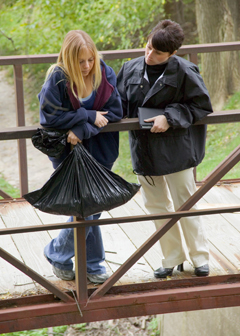What Social and Human Service Assistants Do
About this section

Social and human service assistants help the elderly to stay in their own homes and under their own care whenever possible.
Social and human service assistants help people get through difficult times or get additional support. They help other workers, such as social workers, and they help clients find benefits or community services.
Duties
Social and human service assistants typically do the following:
- Work under the direction of social workers, psychologists, or others who have more education or experience
- Help determine what type of help their clients need
- Work with clients and other professionals, such as social workers, to develop a treatment plan
- Help clients get help with daily activities, such as eating and bathing
- Coordinate services provided to clients by their or other organizations
- Research services available to their clients in their communities
- Determine clients’ eligibility for services such as food stamps and Medicaid
- Help clients complete paperwork to apply for assistance programs
- Monitor clients to ensure services are provided appropriately
Social and human service assistants have many job titles, including case work aide, clinical social work aide, family service assistant, social work assistant, addictions counselor assistant, and human service worker. They serve diverse populations with a range of problems. Their work varies, depending on the clients they serve.
With children and families, social and human service assistants ensure that children live in safe homes. They help parents get the resources, such as food stamps or childcare, they need to care for their children.
With the elderly, workers help clients stay in their own homes and under their own care whenever possible. They coordinate meal deliveries or find personal care aides to help older people with day-to-day needs, such as doing errands or bathing. In some cases, human service workers help look for residential care facilities, such as nursing homes.
For people with disabilities, social and human service assistants help find rehabilitation services that aid their clients. They may work with employers to adapt positions to make them accessible to people with disabilities. Some workers find personal care services to help clients with daily living activities, such as bathing or making meals.
For people with addictions, human service assistants find rehabilitation centers that meet their clients’ needs. They also find support groups or twelve-step programs. They work with people who are dependent on alcohol, drugs, gambling, or other substances or behaviors.
With veterans, assistants help people discharged from the military adjust to civilian life. They help with practical needs, such as finding housing and applying skills gained in the military to civilian jobs. They also help with navigating the overwhelming number of services available to veterans.
For people with mental illnesses, social and human service assistants help clients find resources to cope with their illness. They find self-help and support groups to provide their clients with an assistance network. In addition, they help those with more severe mental illnesses care for themselves by finding personal care services or group housing.
With immigrants, workers help clients adjust to living in a new country. They help clients locate jobs and housing. They also may help clients find programs that teach English, or they may find legal assistance to help immigrants get their paperwork in order.
With former prison inmates, human service assistants help clients re-enter society by finding job training or placement programs. Human service assistants help former inmates find housing and connect with programs that help them make a new life for themselves.
With homeless people, assistants help clients meet their basic needs. They find temporary or permanent housing. They find places, such as soup kitchens, that provide meals. Human service assistants also help homeless people find facilities for other problems they may have, such as joblessness.













